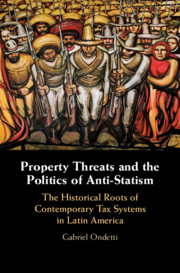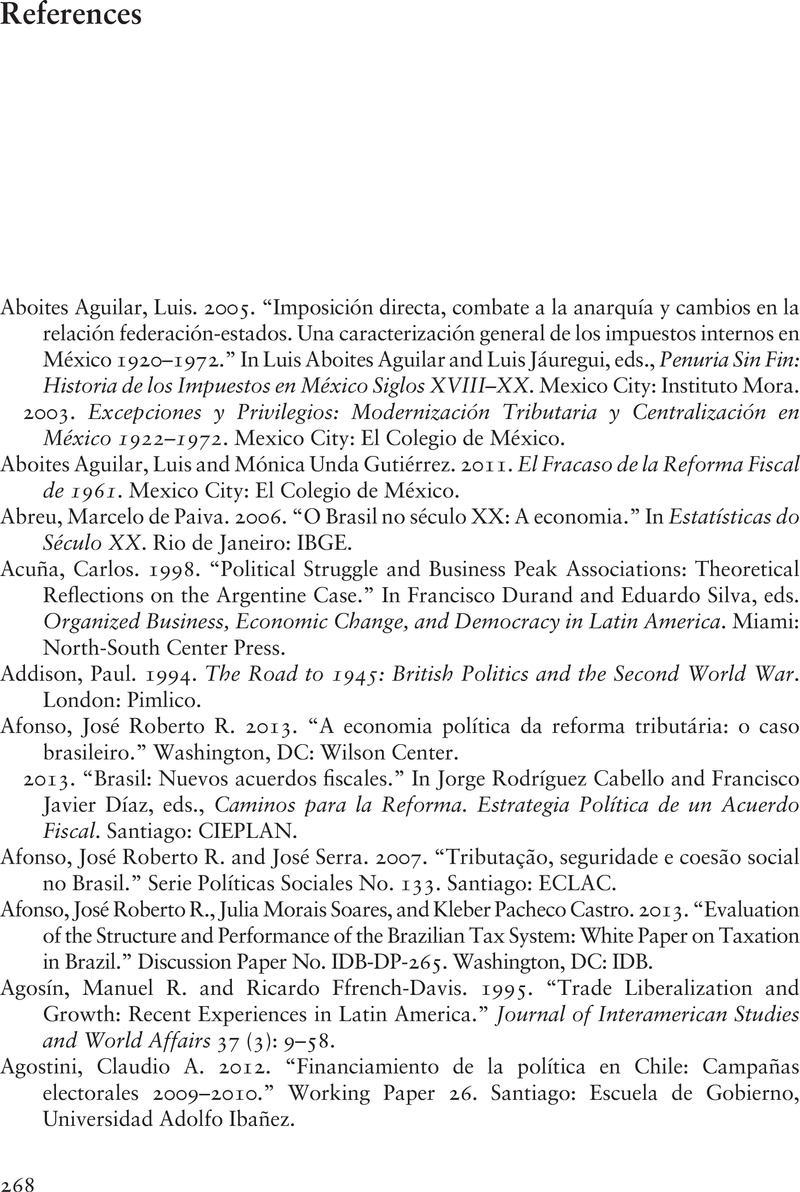 Property Threats and the Politics of Anti-Statism
Property Threats and the Politics of Anti-Statism Book contents
- Property Threats and the Politics of Anti-Statism
- Property Threats and the Politics of Anti-Statism
- Copyright page
- Dedication
- Contents
- Figures
- Tables
- Preface and Acknowledgments
- 1 Introduction
- 2 Historical Property Threats and Contemporary Tax Burdens
- 3 Chile
- 4 Mexico
- 5 Brazil
- 6 Argentina
- 7 Conclusions
- Appendix: Interviews
- References
- Index
- References
References
Published online by Cambridge University Press: 14 January 2021
- Property Threats and the Politics of Anti-Statism
- Property Threats and the Politics of Anti-Statism
- Copyright page
- Dedication
- Contents
- Figures
- Tables
- Preface and Acknowledgments
- 1 Introduction
- 2 Historical Property Threats and Contemporary Tax Burdens
- 3 Chile
- 4 Mexico
- 5 Brazil
- 6 Argentina
- 7 Conclusions
- Appendix: Interviews
- References
- Index
- References
Summary

- Type
- Chapter
- Information
- Property Threats and the Politics of Anti-StatismThe Historical Roots of Contemporary Tax Systems in Latin America, pp. 268 - 302Publisher: Cambridge University PressPrint publication year: 2021


